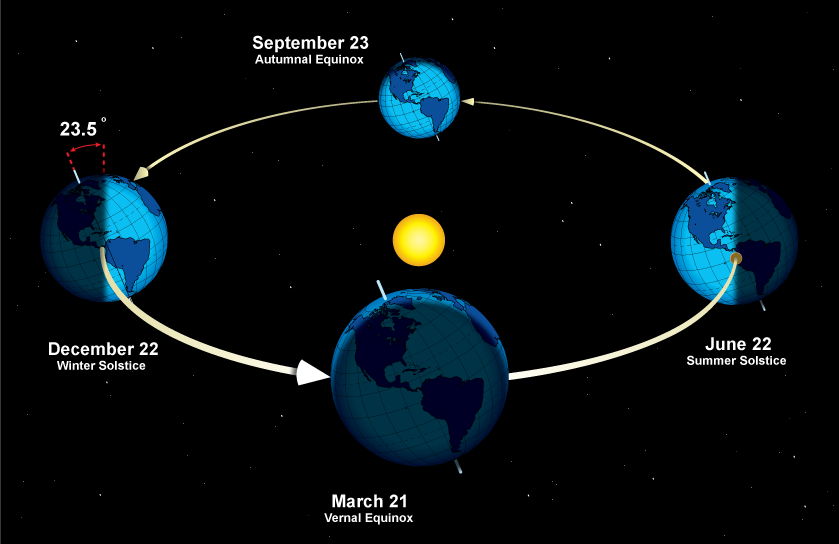Introduction to Global Weather
In the Atmosphere section, we have seen that the Sun transfers heat energy to the Earth. However, this heat energy is received unequally, resulting in global circulations of air and heat, which drives our weather and produces the range of climates we see.
In the Atmosphere section, we have seen that the Sun transfers heat energy to the Earth. However, this heat energy is received unequally, resulting in global circulations of air and heat, which drives our weather and produces the range of climates we see.
Variations in the Earth’s surface (such as water, ice, mountains, forests, bare rock, etc.) absorb or reflect this heat energy differently.
In addition, because of the curve of the Earth, the equatorial region receives the majority of the heat energy from the Sun. However, even at the equator, the heat energy is not not always received directly because the Earth's rotational axis is tilted approximately 23.5° relative to the Sun. As a result of this tilt, the amount of radiation any one place receives varies over the course of a year.
The Seasons
This tilt in the Earth's axis combined with the orbit around the Sun is responsible for our seasons. The Northern Hemisphere winter (December through February) occurs when the Earth's North Pole axis points away from the Sun.
At the same time, the South Pole's axis points toward the Sun, exposing the Southern Hemisphere to greater heat energy, and therefore, summer. During these three months, daylight hours are shortest for the Northern Hemisphere and longest for the Southern Hemisphere.
Six months later, the Earth has completed one half an orbit around the Sun and the seasons are reversed. June, July and August are summer in the Northern Hemisphere and winter in the Southern Hemisphere. The length of daylight hours is also switched, with the longest daylight hours in the Northern Hemisphere and shortest in the Southern Hemisphere.
Twice a year, around March 21 and September 23, both hemispheres receive the same amount of solar radiation. These two days are called the equinox, meaning equal night, where both hemispheres have 12 hours of daylight and darkness.

Learning Lesson: The Shadow Knows I
Learning Lesson: The Shadow Knows II

